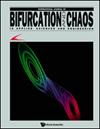具有异构参与者和延迟决策的双通道闭环供应链的动态分析
IF 2.3
4区 数学
Q2 MATHEMATICS, INTERDISCIPLINARY APPLICATIONS
引用次数: 0
摘要
本文研究的是一个双渠道闭环供应链(CLSC),其中制造商通过传统零售渠道批发新产品,并通过自己建立的直接(在线)渠道分销再制造产品。假设零售商是自适应博弈者,制造商是有界理性博弈者,可能采取延迟决策,在此基础上建立了两个动态斯塔克尔伯格博弈模型。研究了纳什均衡的存在性和局部渐进稳定性。此外,还通过数值模拟研究了关键参数对模型复杂性特征和连锁成员绩效的影响。结果表明,制造商过快的价格调整速度、消费者对再制造产品较大的折扣感知以及消费者对直销渠道的偏好都会对纳什均衡的稳定性产生强烈的破坏作用。此外,制造商实施的延迟决策可能是系统的稳定因素,也可能是不稳定因素。当双渠道 CLSC 系统进入周期性循环和混沌运动时,制造商会容忍利润大幅减少,而零售商则会获得更多利润。本文章由计算机程序翻译,如有差异,请以英文原文为准。
Dynamic Analysis of a Dual-Channel Closed-Loop Supply Chain with Heterogeneous Players and a Delay Decision
This paper considers a dual-channel closed-loop supply chain (CLSC) consisting of a manufacturer who wholesales new products through the traditional retail channel and distributes remanufactured products via a direct (online) channel established by himself. Two dynamical Stackelberg game models are developed based on the assumption that the retailer is an adaptive player, and the manufacturer is a bounded rational player who may adopt a delay decision. The existence and locally asymptotic stability of the Nash equilibrium are examined. Moreover, the impacts of key parameters on the complexity characteristics of the models and the performance of chain members are studied by numerical simulation. The results reveal that the excessively fast price adjustment speeds of the manufacturer, the larger consumers’ discount perception for the remanufactured products, and the consumers’ preference for the direct channel have a strong destabilizing effect on the Nash equilibrium’s stability. Furthermore, the delay decision implemented by the manufacturer could be a stabilizing or destabilizing factor for the system. The manufacturer will tolerate a considerable profit reduction while the retailer gains more profits when the dual-channel CLSC system enters periodic cycles and chaotic motions.
求助全文
通过发布文献求助,成功后即可免费获取论文全文。
去求助
来源期刊
CiteScore
4.10
自引率
13.60%
发文量
237
审稿时长
2-4 weeks
期刊介绍:
The International Journal of Bifurcation and Chaos is widely regarded as a leading journal in the exciting fields of chaos theory and nonlinear science. Represented by an international editorial board comprising top researchers from a wide variety of disciplines, it is setting high standards in scientific and production quality. The journal has been reputedly acclaimed by the scientific community around the world, and has featured many important papers by leading researchers from various areas of applied sciences and engineering.
The discipline of chaos theory has created a universal paradigm, a scientific parlance, and a mathematical tool for grappling with complex dynamical phenomena. In every field of applied sciences (astronomy, atmospheric sciences, biology, chemistry, economics, geophysics, life and medical sciences, physics, social sciences, ecology, etc.) and engineering (aerospace, chemical, electronic, civil, computer, information, mechanical, software, telecommunication, etc.), the local and global manifestations of chaos and bifurcation have burst forth in an unprecedented universality, linking scientists heretofore unfamiliar with one another''s fields, and offering an opportunity to reshape our grasp of reality.

 求助内容:
求助内容: 应助结果提醒方式:
应助结果提醒方式:


